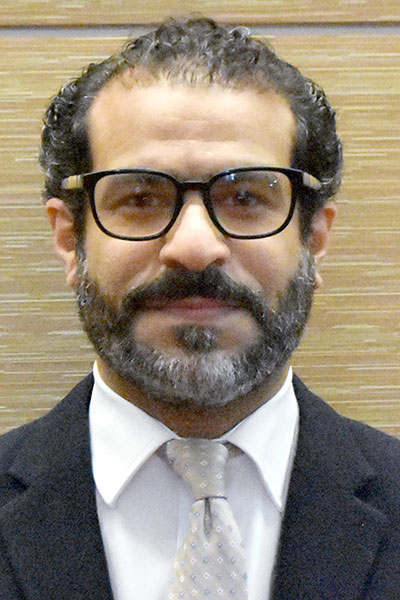Clinical worsening in patients with PH-ILD—pulmonary hypertension (PH) associated with interstitial lung disease (ILD)—can pose a challenge for clinicians, who must consider each underlying component and their interactions while investigating the cause.
During the CHEST 2024 session, My Patient With PH ILD Is Doing Worse: What Is Going On and What Should I Do?, four experts discussed how to evaluate and manage these complex cases.
The ILD component

Tejaswini Kulkarni, MD, MPH, Associate Professor of Pulmonary, Allergy, and Critical Care Medicine and Director of the Interstitial Lung Disease Program at the University of Alabama at Birmingham, explored the progression of the underlying ILD in PH-ILD.
A patient with ILD, other than idiopathic pulmonary fibrosis with radiological evidence of pulmonary fibrosis, must have at least two of the following criteria to be diagnosed with progressive pulmonary fibrosis: worsening respiratory symptoms and physiological or radiological evidence of disease progression.
Clinicians should also consider whether a patient is experiencing an acute exacerbation rather than natural disease progression. To do so, they must understand the risk factors for both, Dr. Kulkarni said.
“The key factors to consider are: What is the severity of lung disease in your patient? What is the rate of disease progression?” she said. “What is the underlying etiology and extrapulmonary involvement, and does that give you a clue on where the disease status is and how well controlled that disease is?”
The PH component

Session Chair, Karim El-Kersh, MD, Professor of Medicine at the University of Arizona College of Medicine and Director of the Pulmonary Hypertension Program at Banner University Medical Center, reviewed the PH aspect of PH-ILD.
Any degree of PH portends a poor prognosis, he said. In one study of patients with a milder form of underlying ILD, mean pulmonary arterial pressure increased by an average rate of 1.8 mm Hg/year. However, in another study of patients with more restrictive patterns, this rate of increase was 3.8 mm Hg/month.
Diagnosing PH in the setting of ILD can be challenging because symptoms overlap, and you want to avoid capturing patients toward the end of the disease, Dr. El-Kersh said. That’s why it is important to incorporate diagnostic modalities that include functional biologic and morphologic domains.
“When the echo is done either for diagnosis or for progression of the disease, it’s important to not only focus on right ventricular systolic pressure, but you have to think about pressure, size, and function,” he said. “When you incorporate more parameters, your sensitivity and performance become better.”
Unfortunately, Dr. El-Kersh noted, inhaled treprostinil is the only FDA-approved therapy for treating PH-ILD based on the INCREASE trial.
Role of lung transplantation

Shweta Kukrety, MBBS, Assistant Professor of Medicine at the University of Nebraska Medical Center, discussed lung transplantation in patients with PH-ILD.
Early referral is important for ILD patients seeking lung transplantation, she said, as the transplant process can take many months.
“Early referral helps the patient get used to the concept of transplant,” Dr. Kukrety said. “It gives the patient an opportunity to overcome all of their modifiable barriers, and posttransplant outcomes can be improved.”
A lung transplant is recommended for any patient with pulmonary fibrosis with FVC of less than 80% or a diffusing capacity for carbon monoxide (Dlco) of less than 40%. Any patient that has a 10% decline in FVC or 15% decline in Dlco over a two-year period should also be considered for transplant, as well as patients on supplemental oxygen.
There are few absolute contraindications for lung transplantation; some of them include malignancy with a high risk of cancer recurrence, active substance use or dependence, and HIV infection with detectable viral load.
Risk factors associated with unfavorable posttransplant outcomes in ILD patients include advanced age, obesity, malnutrition, deconditioning, and gastroesophageal reflux disease.
Optimizing, improving, and managing the patient’s nutritional status, comorbidities, and conditioning can improve posttransplant outcomes, Dr. Kukrety said.
Involving palliative care

Denise Sese, MD, Assistant Professor at the Medical University of South Carolina, emphasized the importance of considering palliative care in PH-ILD.
“Palliative care may actually be the most helpful treatment that you can give to your patients at times,” Dr. Sese said.
Ineffective palliative care utilization is apparent when looking at the data, she said. In one study of pulmonary arterial hypertension (PAH) deaths from 2008 to 2013, 70% of patients died in the hospital and less than half had advance directives. Of 30,000 PAH admissions between 2001 and 2017, palliative care utilization was at only 2.2%.
Studies have examined why palliative care is underutilized. A 2014 survey found that physicians who treat PH felt more comfortable prescribing hemodynamic medications than palliative care. Additional barriers include insufficient knowledge and time restraints.
Dr. Sese identified three steps to reducing barriers to routine integration of palliative care services in PH-ILD, including addressing problems with access, finding ways to improve patient and provider communication, and increasing education to improve understanding and acceptance.
Join us at CHEST 2025
Save the date for the next Annual Meeting, October 19 to 22, 2025, in Chicago. CHEST 2025 will explore the latest advancements in pulmonary, critical care, and sleep medicine, with a focus on innovation and the future, just as the city itself embodies progress and reinvention.





